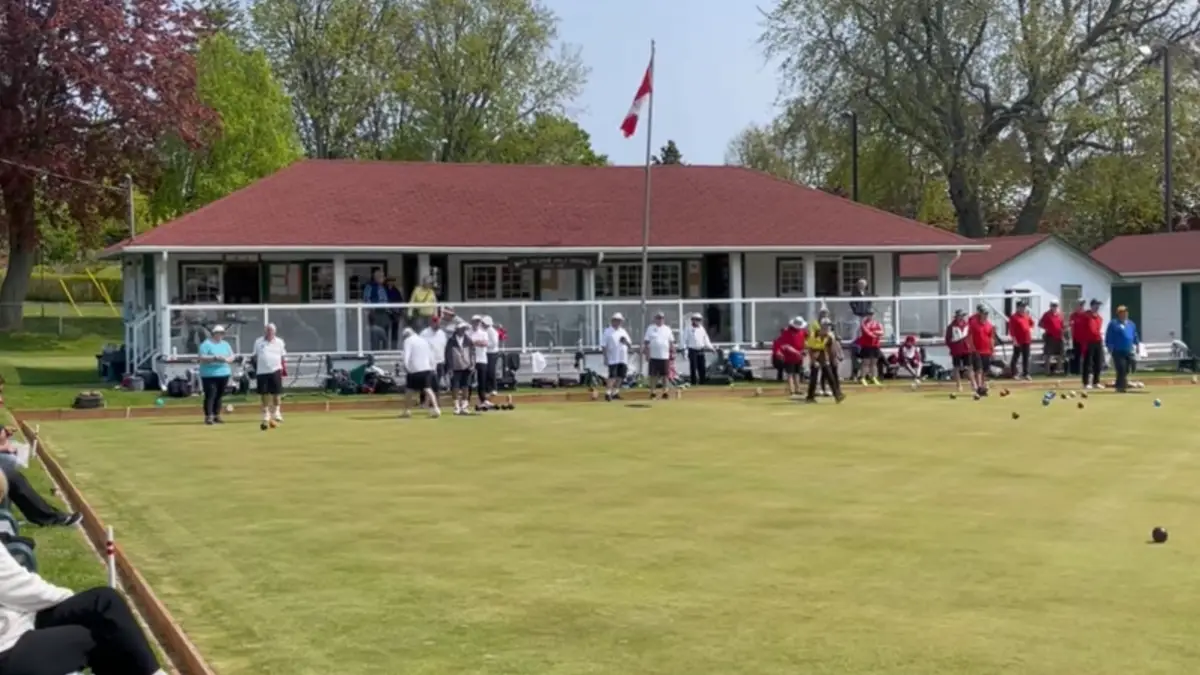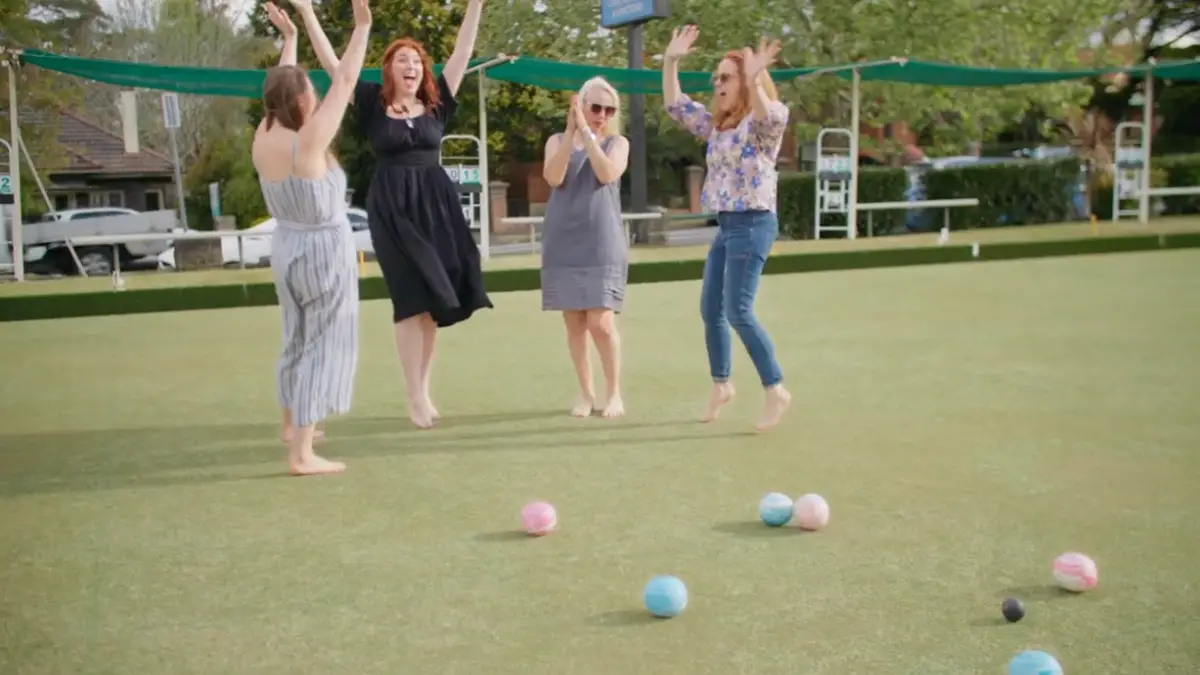The role of a marker in lawn bowls is to assist the players in a singles match. The marker stands at the opposite side of the green from the players so he can see how the bowls are landing in relation to the jack.
The marker functions as the players’ eyes at the other end of the green.
When asked by the player who has the the mat, and prior to her delivering a bowl, the marker may impart the following information: whether or not the player holds the shot, indicates the distances between bowls, and any other technical information requested.
The marker may not give partisan assistance such as placing a foot to indicate the position of the jack or by encouraging one player over another. Neutrality is the watchword for a marker.
The marker in lawn bowls should never comment on play in any way, and never say “well done” or “bad luck” or any such thing. A zipped lip is the best policy for a marker.
Tasks of a marker in lawn bowls
Here is how a typical game involving a marker goes:
- The competition organiser hands out the score cards for the singles game, announcing the names of the players and the name of the marker. The marker then collects the card and proceeds to the green and rink noted on the card.
- By this time the marker should have read the Conditions of Play (the guiding rules) for the competition in question.
- As soon as the marker meets the players, he introduces himself in a friendly manner.
- Once on the green, the marker writes the players’ names on the board. The name at the top and left of the score card goes at the top of the board.
- The marker takes out a coin to prepare to toss for the mat. The players either ask the marker to do the toss, or they elect to “roll a bowl” to establish whose mat it is (who will roll the jack first).
- The winner of the mat can “give away” the mat to the opponent as a strategic matter.
- Whichever player wins the mat or rolls the first bowl, the names on the scorecard and the board remain in the same position.
- The players agree on how many bowls to roll for the trial ends and the marker takes the mat up the green to the other end.
- The player on the mat rolls the jack and indicates to the marker where on the centre line to place the jack. The trial ends are the only times the players can elect to move the jack up or down the centre line.
- The marker centres the jack at the desired spot and the player delivers the first bowl. The marker then indicates where the bowl has landed e.g. two metres short, half a metre through, then kicks the bowl out of the head.
- The players then alternate their trial end bowls until all are played, and then do the same from the other end, with the second player rolling the jack.
- Traditionally, the marker lines up the trial-end bowls neatly in two rows alongside one another.
- After the trial ends the players wish each other well by shaking hands and saying something like “enjoy the game”. While crossing the green they thank the marker for marking.
- The game begins. The marker stands well out of the way of the head – about 3 metres behind the jack and one metre to the side. It is advisable to stand on the same side i.e. backhand or forehand at both ends so the players are not distracted by the marker’s changing position.
- If the jack is too short, that is shorter than 23 metres in length, the marker may alert the players to this. They can figure out if it’s too short themselves or call an umpire for a long measure.
- The marker keeps score on the card as well as on the scoreboard or flip board.
- The players are allowed to ask the marker question when the opponent’s bowl has come to rest and before stepping onto the mat.
- Players are taught that it’s best to ask a single question and get a single answer. Rather say: “Which is the shot bowl?” than ask “Which bowl is lying and how far is it from the jack?”
- In previous years markers were told that they must answer the player’s question and nothing more, but the emphasis has now changed to helping the player as much as possible. Thus the answer to “Which is the shot bowl?” can be answered by pointing it out and also showing which player’s bowl it is by putting the hand on the shoulder or heart (showing that it’s the player’s bowl) or by putting a hand on another hand (to show that it’s the opponent’s bowl).
- If a marker shows that a certain bowl is lying the shot, this is just an opinion. If it turns out later that it was not the shot bowl there is nothing the players can do about it.
- Players can measure shots themselves or they can ask the marker to do it.
- Before measuring, use props to stabilise the jack and bowls that are lying precariously.
- If the players call for an umpire’s measure, stabilise the jack and bowls with props (also called gums) while you are waiting for the umpire to arrive.
- Players and marker must stand well away from the head while the umpire measures. The umpire can ask the marker to assist her if necessary.
- Throughout the game, when in doubt, call the umpire.
- The first player to win 21 points wins the game. The last line on the card should read 21- (loser’s score) no matter how many points the winning player was lying on the final end.
- The players shake hands with each other and the marker.
- Both players sign the card to confirm that the recorded score is correct.
- The marker writes the time that the game ended on the card. The players ten minutes from that time to lodge an objection with the controlling body, should they have one. (Read more about this in the World Bowls’s Laws of Bowls , Section 52.4.4.
- The umpire then checks the card against the scoreboard or flip board.
- Do not clean the board or touch the flip board after the game, in case there is a query later.





